Cymbopogon ambiguus
(Hack.) A.Camus
Scented grass
Scent grass
Scented Oilgrass
Lemon-scented grass
Lemon grass
A clumping grass, with several long flowering stems, usually to 1 m, very rarely to 1.5 m tall (Fig. 1). The leaves concentrated towards the base and strongly lemon-scented. Stems hold several flowering heads or clusters, these flower heads are borne at the end of the flowering stems for 1/5-1⁄3 of the stem length. Whenyoung these clusters are enclosed or partially enclosed in a leaf-like sheath (or spathe) (Fig. 2 & 3). In most cases, these sheaths then enclose, or partially enclose, 1-4 smaller sheaths (or spatheoles). The smaller sheaths (spatheoles) each contain two branches comprised of the basic flowering units or spikelets, which emerge from the sheaths with age. The branches are typically held upright and may eventually diverge, but if so usually diverge less than 40°. The spikelets are arranged in pairs, each pair stacked one after the other in what appears as a solid spike-like branch (Fig. 2 & 3). This flowering spike/branch becomes fragile with age and breaks apart between the pairs of spikelets (Fig. 4). Each spikelet pair consists of a stalkless/sessile spikelet, a stalked/pedicelled spikelet, and an internode (a segment of the flowering stem) (Fig. 4). The internode connects each spikelet pair to the next spikelet pair on the spike (Fig. 4). The base or callus of the spikelet pair slots into a socket formed at the tip of the internode of the spikelet pair below it. The length of the hairs at the base of the spikelet pairs and the length and density of hairs on the pedicels and internodes can be useful in diagnosing this species.
BOTANICAL DESCRIPTION
Perennial, culms erect, 30-100 cm tall. Leaf-blades 15-50 cm long, 1-5 mm wide. Leaf-blade surface scabrous, glabrous, straight, becoming flexuose/ wavy in dried form. Leaf-sheaths inrolled or flat, basal sheaths spreading but not recurved or bent back. Inflorescence compound, with paired spike-like racemes, 15-20 (-30) mm long, partially enclosed in a subtending spatheole, 10-30 (-35) mm long, with several spatheoles in a cluster. Each cluster subtended by a spathe (Fig. 2 & 3), the spathe sometimes up to 82 mm long. Spikelets in pairs, one sessile and one pedicellate, several per spike/branch. The basal pair of spikelets on the lower spike/branch both sterile rarely heterogamous. The spikes are fragile at the nodes with spikelet pairs falling as a single unit. Sessile spikelets 4-6.5 mm long, with an awned floret, the awn 12-20 mm long. The pedicelled spikelet sterile/male, the spikelet 3-5 mm long. The rhachis internode and pedicels densely hairy, hairs 4-7 mm long, the spikelet callus with longest hairs up to 1.3 mm long (Fig. 4).
DIAGNOSTIC FEATURES
Species of Cymobopogon are readily identified by the lemon-scented leaves when crushed, the clumping perennial form and the flower heads enclosed within spathes and spatheoles (Fig. 2 & 3). Distinguishing between species of Cymbopogon can be more difficult and can often require dissection of flower heads and inspection of spikelets under magnification. Cymbopogon ambiguus is typically characterised by the combination of the following characters: a dense covering of hairs on the pedicels and joints of the spikelets (the longest of these hairs between 4-7 mm long), the callus hairs up to 1.3 mm long, and the leaf sheath folded inwards or inrolled. This species is very easily confused with Cymbopogon procerus, atypically more robust plant, 1.5-2.5 m tall, with larger flowering heads. The proportion of the flowering head that carries spikelets occupies 1/3-1/2 of the stem in C. procerus, compared to 1/5 to 1/3 in C. ambiguus. These characters are more easily observed on living specimens in the field than on pressed specimens and it may be difficult to distinguish between these two species using pressed material only. Other species that are similar include Cymbopogn bombycinus, Cymbopogon obtectus and Cymbopogon globosus; characters that help to distinguish them are discussed in the C. bombycinus factsheet in this series.
NATURAL VALUES
Cymbopogon species are perennial, are considered highly flammable and drought-resistant, and have been reported as being used for medicinal purposes by Aboriginal people (Lazarides 2002). Cymbopogon ambiguus is often promoted as a native substitute for cultivated lemongrass Cymbopogon citratus.
HABITAT
Cymbopogon ambiguus is the most widely distributed species of Cymbopogon in Australia and occupies a variety of habitats, including rocky outcrops, savanna, edges of rainforest, and along or near watercourses. In the Cape York Peninsula (CYP) region, it has mostly been collected from the eastern half of the peninsula but this is expected to reflect collection effort in the area rather than a natural distribution (Fig. 8). Found throughout all mainland states of Australia; also collected from the north coast of Timor.
LAND MANAGEMENT NOTES
Usually grazed when young (Lazarides 2002). Flowers all year, in the region predominantly flowers in the wet season.

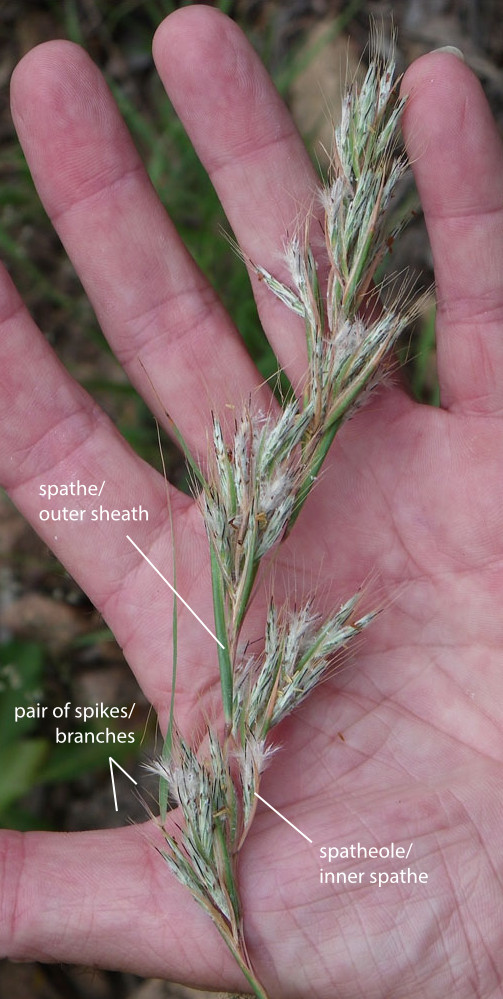
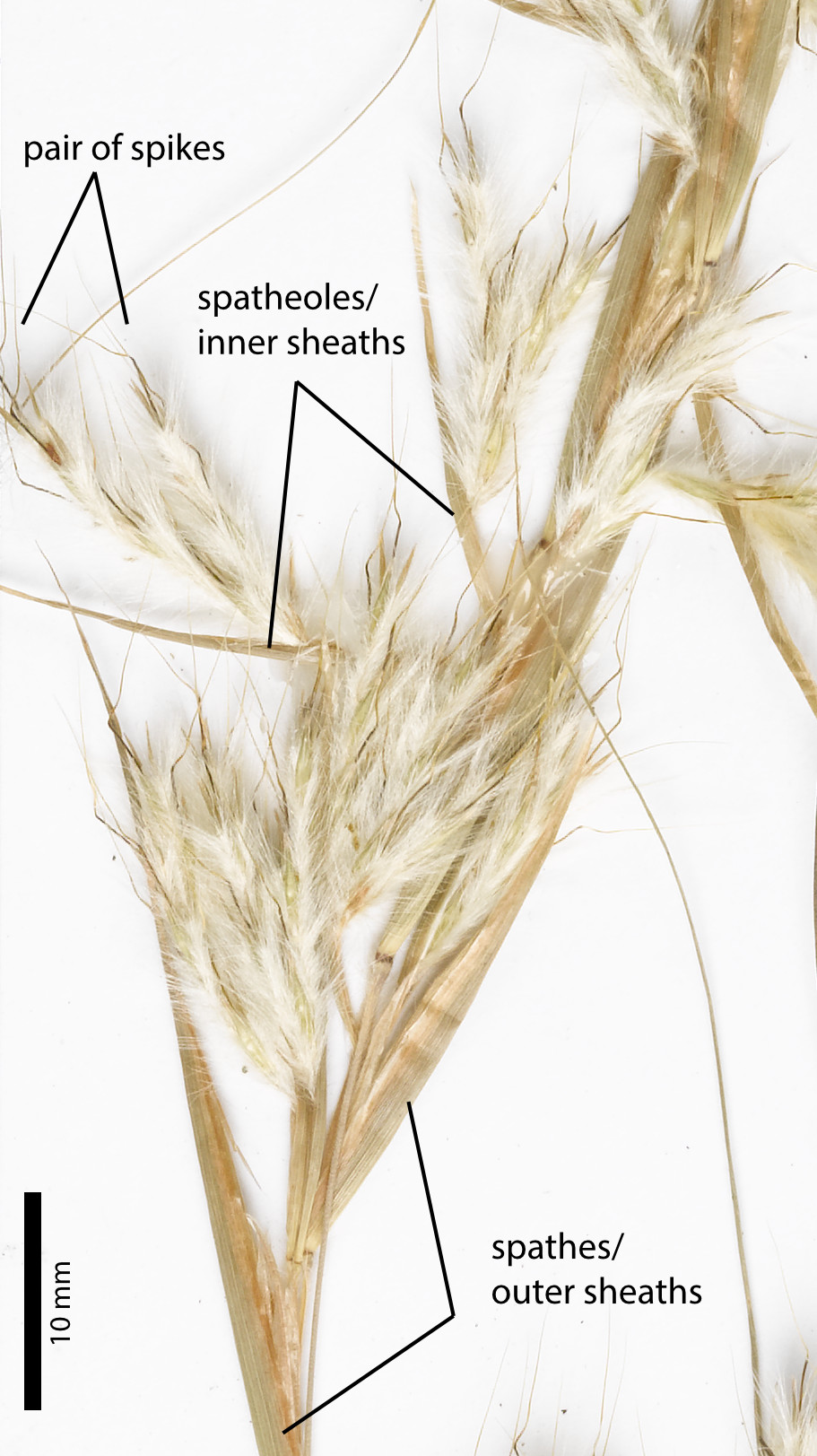
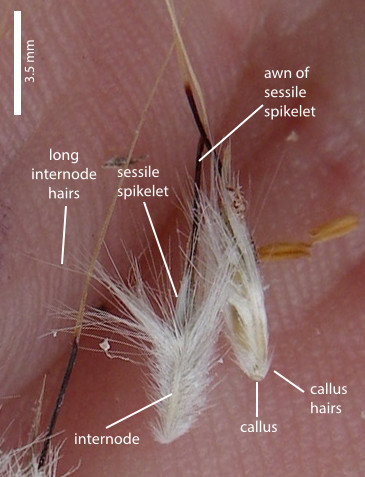

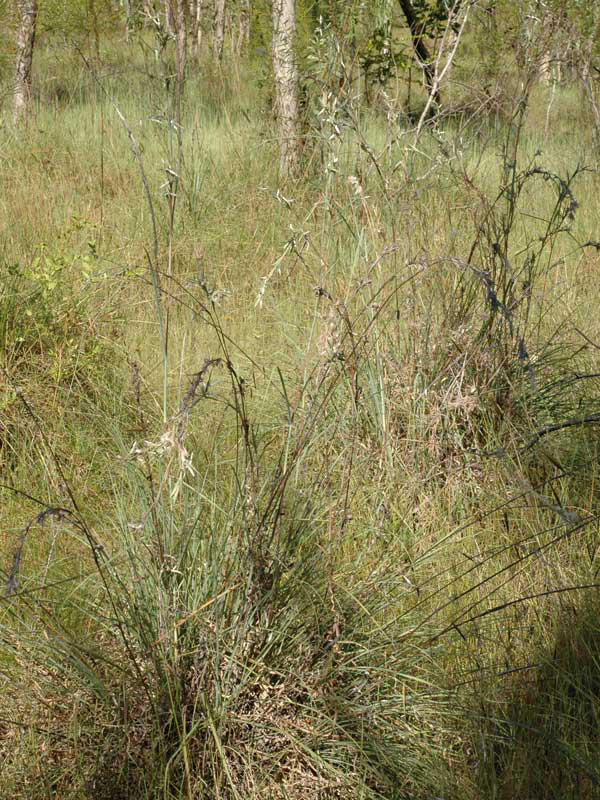
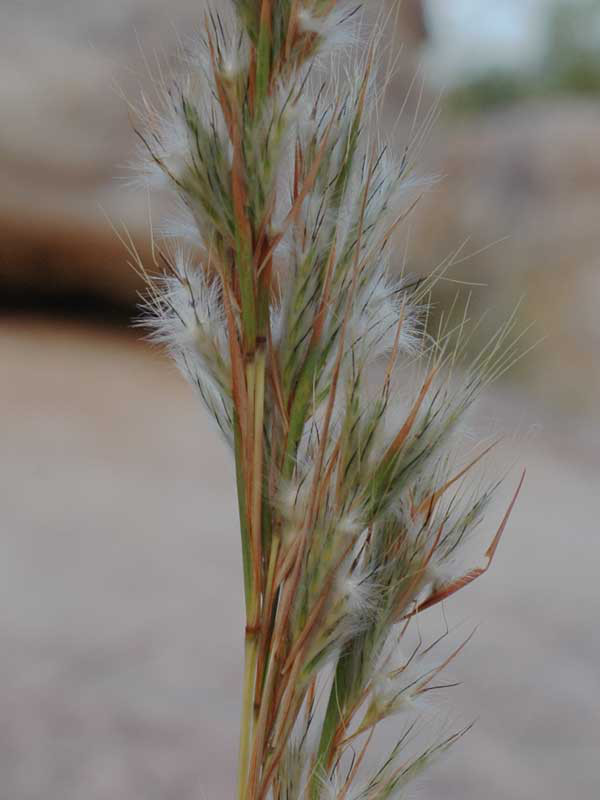
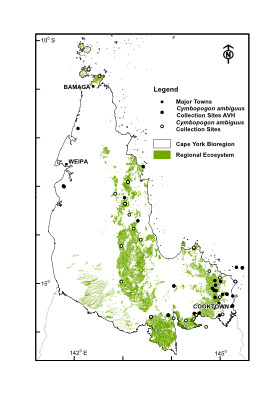
Resources
AVH (2019). Australia’s Virtual Herbarium, Council of Heads of Australasian Herbaria, <http://avh.chah.org. au>, accessed Apr 2019.
Blake, S.T. (1974). Revision of the genera Cymbopogon and Schizachyrium (Gramineae) in Australia. Contributions from the Queensland Herbarium 17: 8-14.
Hooker, Nanette B. (2016). Grasses of Townsville. James Cook University, Townsville, QLD, Australia.
Lazarides, M. (2002). Economic attributes of Australian grasses. Flora of Australia 43: 213-245.
Simon, B.K. in Wheeler, J.R. (ed.) (1992). Cymbopogon. Flora of the Kimberley Region: 1143.
Simon, B.K. & Alfonso, Y. (2011). AusGrass2, http:// ausgrass2.myspecies.info/accessed on [Apr 2019].

